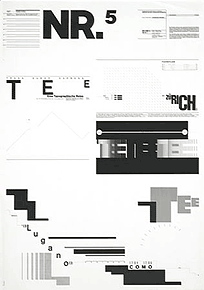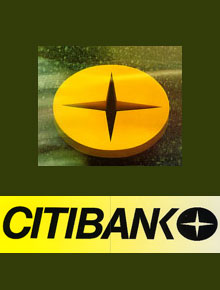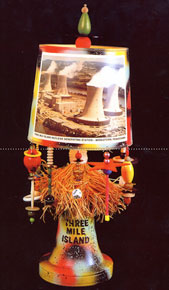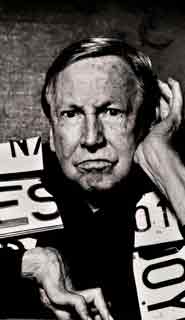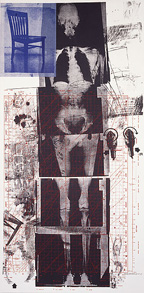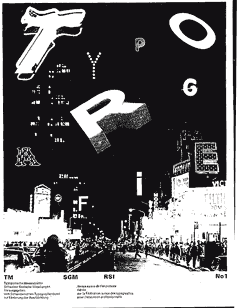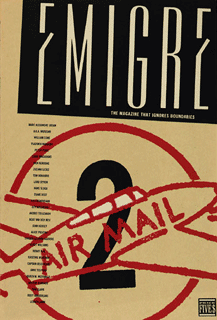Wolfgang Weingart (b. 1941)
Swiss Punk
Wolfgang Weingart is a German graphic designer credited as the progenitor of New Wave typography. According to Weingart, "I took 'Swiss Typography' as my starting point, but then I blew it apart, never forcing any style upon my students. I never intended to create a "style." It just happened that the students picked up—and misinterpreted—a so called 'Weingart style' and spread it around."
“His typographic experiments were strongly grounded, and were based on an intimate understanding of the semantic, syntactic and pragmatic functions of typography. Whereas traditional Swiss typography mainly focused on the syntactic function, Weingart was interested in how far the graphic qualities of typography can be pushed and still retain its meaning. This is when the semantic function of typography comes in: Weingart believes that certain graphic modifications of type can in fact intensify meaning. “What's the use of being legible, when nothing inspires you to take notice of it?” Excerpt from Keith Tam
How well was his progressive idea about typography received at that time? Weingart recalls, "in my presentations in 1972, there was always a group of audience that hated it, one group that loved it, and the rest would all leave during the lecture."
|
It wasn't until the early eighties, when his American students like April Greiman and Dan Friedman brought back to the US a wealth of typographic arsenals from Basel and co-opted it into the mainstream of graphic design. From April Greiman's ´hybrid imagery" to David Carson's deconstructive page layouts, anarchy reigned supreme in the nineties. Those were the days for graphic design superstars, whose style many a graphic designer adored and imitated. While no one can give a definitive answer as to whether these American graphic designers took what Weingart did and brought it to new heights, they certainly managed to make it a huge commercial success. "They were doing it as a style and it was never my idea to create fashion," denotes Weingart. The teaching at Basel for Weingart is not about trends but a 'stability' that they try to move away from, but never totally.
|
Dan Friedman (1945-1995)
New Wave/Radical Modernism
Weingart alum, Known for his work at Ansbach and Grossman and Pentagram, Friedman grew to feel that modernism had devolved into a bland, soulless surface treatment. (His Citibank logo of 1975 above.) He invented the term Radical Modernism to distance himself from both the formal constraints of Modernism and the post modern label. Friedman was attempting to reconcile the social idealism of the early 2oth Modernists with the realities of his life in 1980's New York City.
"Radical modernism is my reaffirmation of the idealistic roots of our modernity, adjusted to include more of our diverse cultures." In his text, Radical Modernism, Freedman illustrates his work in diverse mediums,- experimental furniture, sculpture, posters, logos, books, installations, typographic lessons, and his apartment. "Friedman argued that design was in crisis and urged designers to see their work in a larger cultural context.
|
Below read Friedman's philosophy (quoted from an interview in Eye shortly before his death in 1995)
'In the 1960s I saw graphic design as a noble endeavor, integral to larger planning, architectural and social issues. What I realized in the 1970s, when I was doing major corporate identity projects, is that design had become a preoccupation with what things look like rather than with what they mean. What designers were doing was creating visual identities for other people - not unlike the work of fashion stylists, political image consultants or plastic surgeons. We had become experts who suggest how other people can project a visual impression that reflects who they think they are. And we have deceived ourselves into thinking that the modernization service we supply has the same integrity as service to the public good. Modernism forfeited its claim to a moral authority when designers sold it away as corporate style."
|
Robert Rauschenberg
Robert Rauschenberg (1925-2008) enrolled at Black Mountain College, North Carolina. He studied with Josef Albers and learned from his Werklehre teaching method— the practice Albers had developed at the Bauhaus which emphasis "a fingertip feel for materials.".
It was there that Rauschenberg''s pivotal early engagement with photography began under the tutelage of figures such as Hazel Larsen Archer and Aaron Siskind, and where he began taking photographs alongside his fellow students Dorothea Rockburne, Cy Twombly and Susan Weil. The experience had such an effect on him that for a time he was unsure whether to pursue painting or photography as a career. It is, then, somewhat ironic that subsequent works such as his Silk-Screen paintings were able to combine both. |
Personally I think we need to give more credit to Rauschenberg's influence on early digital graphic design. His combinations of image in layers was referenced by the most influential graphic designers, such as April Greiman.
"The human-machine interaction that is so important in Rauschenberg's art as a whole is crucial here. The symbiosis of of the human and the technological."
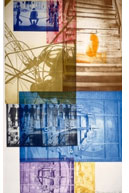
|
April Greiman (b. 1948)
Although initially educated in the Modernist style at Kansas City Art Institute, Greiman was later influenced by Wolfgang Weingart in Switzerland to break from Modernism. She moved to California where she was inspired to use the computer as a means of artistic expression and exploration of new image generation. "It's not just Graphic Design anymore. We don't have a new name for it yet."
Ms Greiman synthesized the complex layering style of artists like Robert Raushenberg and the aesthetic of New Wave typography with the new capabilities of the computer to become a visionary pioneer of digital design.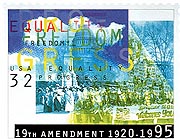
Greiman, US Postage Stamp, 1995 |
Emigre
In 1984 Rudy VanderLans and Zuzana Licko, both Europeans relocated in the US, started an independent type foundry and publication, Emigre Graphics, in Berkeley, California. Their publication, Emigre magazine was a collection of essays, interview, reviews and font showcases that circulated between 1984 and 2005. You can read a selection of past articles here.
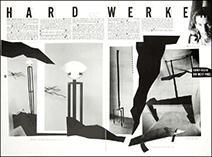
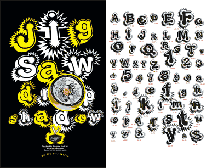
|
1
Excerpt from Keith Tam interview with Weingart
2
Peter Rea,
Dan Friedman
Eye, Issue 14, Autumn 1994
(Feature)
|
3
Nicholas Cullinan, Vaporous Fantasies : Rauschenberg's Photograms at the Tate. 2011
Link
4
Linda Hults. The Print in the Western World, 1996.
|
Rauschenberg image from Interview Magazine. |
|
